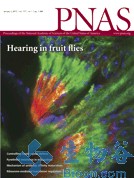PNAS:贺永等人类大脑功能互作组的生理基础机制研究新进展
2013-02-17 生物通 生物通
来自北京师范大学认知神经科学与学习重点实验室,美国NIH药物滥用研究所的两个研究组合作,完成了题为“Coupling of functional connectivity and regional cerebral blood flow reveals a physiological basis for network hubs of the human brain”的文章,指出无论是静息休息状态
来自北京师范大学认知神经科学与学习重点实验室,美国NIH药物滥用研究所的两个研究组合作,完成了题为“Coupling of functional connectivity and regional cerebral blood flow reveals a physiological basis for network hubs of the human brain”的文章,指出无论是静息休息状态,还是任务应答调控状态下,在血流供应和大脑功能拓扑结构之间都存在紧密联系,这也许有助于揭示人类大脑功能互作组的生理基础机制。相关成果公布在1月PNAS杂志在线版上。
文章的通讯作者是北京师范大学贺永研究员,以及美国NIH药物滥用研究所杨一鸿研究员,其中贺永研究员主要从事计算神经影像与人脑连接组学研究,即采用多个模态的神经影像技术(结构、扩散和功能磁共振成像),结合数学图论的计算方法,研究活体人脑结构和功能网络的连接模式。
人类大脑功能网络包含了一些密集的连接枢纽,这些连接点在休息和工作状态下,担负着不同区域信息传递的关键职责,然而迄今为止,科学家们对于这些功能性连接点,与大脑生理学反应之间的关联,比如局部脑血流量(rCBF),知之甚少。
在这篇文章中,研究人员利用血氧合度依赖对比(Blood Oxygenation Level Dependent Contrast,BOLD Contrast),以及动脉自旋标记灌注对比(arterial-spin–labeling perfusion contrasts)的功能磁共振成像数据,分析了休息状态和 N-back工作记忆任务状态下,大脑功能连接强度(functional connectivity strength,FCS)和局部脑血流量rCBF。
在休息状态下,研究人员发现了高FCS的功能大脑连接点,主要出现在默认模式(default mode),insula和视觉区域中,FCS显示出与rCBF明显的空间相关性,并且比较于视觉和感觉网络,在默认模式网络(DMN,包括内侧额叶-顶叶皮层)和执行管控神经网络(ECN,包括侧额叶-顶叶皮质)中关联性更强。
而且这种关联性取决于连接的距离,也就是说,rCBF与长距离连接点,比与短距离连接点的关联更强。值得注意的是,几个DMN和ECN区域表现出了每单元连接强度,更高的rCBF(rCBF/FCS ratio),而这一指标在后视觉区域较低。
在工作记忆的实验中,研究人员发现FCS-rCBF耦合和 rCBF/FCS ratio受到ECN和/或DMN区域负载任务的调控。此外,任务诱导的侧顶叶中FCS和rCBFA的改变与行为表现正相关。
这些研究结果表明,无论是静息休息状态,还是任务应答调控状态下,在血流供应和大脑功能拓扑结构之间都存在紧密联系,这也许有助于揭示人类大脑功能互作组的生理基础机制。
贺永研究组曾建立了世界上第一个活体人脑结构连接网络草图,发现了人脑不同区域之间的灰质厚度具有“小世界”组织方式,并由此建立了阿尔茨海默氏病和白质多发硬化病的脑结构网络失连接模型。

doi: 10.1073/pnas.1214900110
PMC:
PMID:
Xia Liang, Qihong Zou, Yong He, and Yihong Yang
Human brain functional networks contain a few densely connected hubs that play a vital role in transferring information across regions during resting and task states. However, the relationship of these functional hubs to measures of brain physiology, such as regional cerebral blood flow (rCBF), remains incompletely understood. Here, we used functional MRI data of blood-oxygenation-level–dependent and arterial-spin–labeling perfusion contrasts to investigate the relationship between functional connectivity strength (FCS) and rCBF during resting and an N-back working-memory task. During resting state, functional brain hubs with higher FCS were identified, primarily in the default-mode, insula, and visual regions. The FCS showed a striking spatial correlation with rCBF, and the correlation was stronger in the default-mode network (DMN; including medial frontal-parietal cortices) and executive control network (ECN; including lateral frontal-parietal cortices) compared with visual and sensorimotor networks. Moreover, the relationship was connection–distance dependent; i.e., rCBF correlated stronger with long-range hubs than short-range ones. It is notable that several DMN and ECN regions exhibited higher rCBF per unit connectivity strength (rCBF/FCS ratio); whereas, this index was lower in posterior visual areas. During the working-memory experiment, both FCS–rCBF coupling and rCBF/FCS ratio were modulated by task load in the ECN and/or DMN regions. Finally, task-induced changes of FCS and rCBF in the lateral-parietal lobe positively correlated with behavioral performance. Together, our results indicate a tight coupling between blood supply and brain functional topology during rest and its modulation in response to task demands, which may shed light on the physiological basis of human brain functional connectome
本网站所有内容来源注明为“梅斯医学”或“MedSci原创”的文字、图片和音视频资料,版权均属于梅斯医学所有。非经授权,任何媒体、网站或个人不得转载,授权转载时须注明来源为“梅斯医学”。其它来源的文章系转载文章,或“梅斯号”自媒体发布的文章,仅系出于传递更多信息之目的,本站仅负责审核内容合规,其内容不代表本站立场,本站不负责内容的准确性和版权。如果存在侵权、或不希望被转载的媒体或个人可与我们联系,我们将立即进行删除处理。
在此留言











#机制研究#
70
#生理基础#
59
#大脑功能#
68
#PNAS#
53
#脑功能#
69
#互作#
69